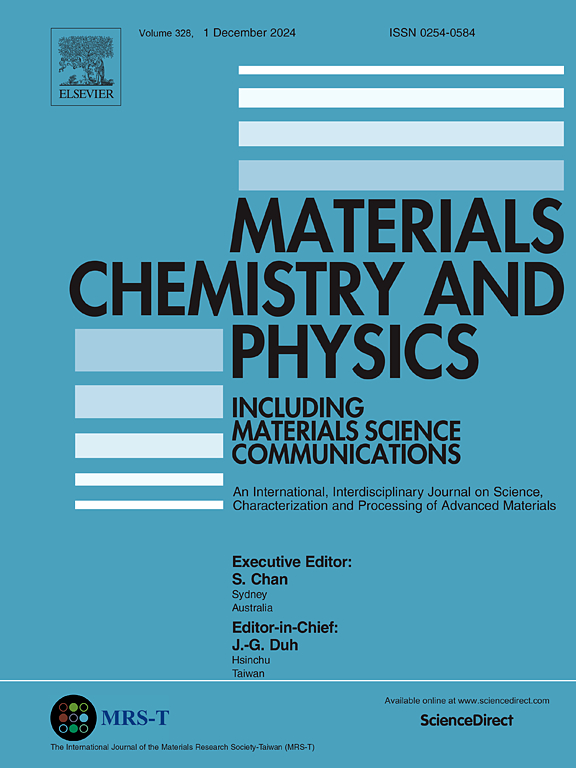Microstructural evolution and hydrogen storage performance of TiZrHfVNb1-xCux (for X = 0, 0.6, 0.8 and 1) high-entropy alloys
IF 4.3
3区 材料科学
Q2 MATERIALS SCIENCE, MULTIDISCIPLINARY
引用次数: 0
Abstract
High-entropy alloys (HEAs), particularly those with body-centered cubic (BCC) and C14-laves structures, have gained attention for their tunable hydrogen storage properties. This study investigates the TiZrHfVNb1-xCux system, focusing on the impact of incremental Nb substitution by Cu (x = 0.6, 0.8, and 1.0) on microstructural evolution and hydrogen absorption behavior. The introduction of Cu leads to phase segregation, with V enrichment in dendrites and Zr/Hf accumulation in interdendritic regions, promoting a mixed BCC and C14 Laves phase structure. The increase in Cu content facilitates the formation of C14 Laves phases because Cu, being a relatively small atom, effectively satisfies the geometrical criterion necessary for the stabilization of this phase when substituting Nb. Initial hydrogenation performed at room temperature reveals that the HEAs achieve a hydrogen storage capacity of 1.4–1.6 wt% with rapid kinetics following thermal activation. Notably, the TiZrHfVCu alloy (x = 1) exhibits reversible hydrogen absorption and desorption near atmospheric pressure, storing 1.5 wt% hydrogen. These findings underscore the TiZrHfVNb1-xCux system's potential for hydrogen storage under accessible temperature and pressure conditions, suggesting a pathway to viable solid-state hydrogen storage applications.
TiZrHfVNb1-xCux (X = 0、0.6、0.8和1)高熵合金的组织演变及储氢性能
高熵合金(HEAs),特别是具有体心立方(BCC)和C14-laves结构的高熵合金(HEAs)因其可调节的储氢性能而受到人们的关注。本研究研究了TiZrHfVNb1-xCux体系,重点研究了Cu (x = 0.6, 0.8和1.0)增量取代Nb对微观结构演变和吸氢行为的影响。Cu的引入导致了相偏析,V在枝晶中富集,Zr/Hf在枝晶间富集,形成了BCC和C14 Laves混合相结构。Cu含量的增加促进了C14 Laves相的形成,因为Cu作为一个相对较小的原子,在取代Nb时有效地满足了该相稳定所需的几何准则。在室温下进行的初始加氢表明,HEAs在热活化后具有快速动力学,储氢容量为1.4-1.6 wt%。值得注意的是,TiZrHfVCu合金(x = 1)在大气压下表现出可逆的氢吸收和解吸,储存了1.5 wt%的氢。这些发现强调了TiZrHfVNb1-xCux系统在可接受的温度和压力条件下储氢的潜力,为固态储氢应用提供了一条可行的途径。
本文章由计算机程序翻译,如有差异,请以英文原文为准。
求助全文
约1分钟内获得全文
求助全文
来源期刊

Materials Chemistry and Physics
工程技术-材料科学:综合
CiteScore
8.70
自引率
4.30%
发文量
1515
审稿时长
69 days
期刊介绍:
Materials Chemistry and Physics is devoted to short communications, full-length research papers and feature articles on interrelationships among structure, properties, processing and performance of materials. The Editors welcome manuscripts on thin films, surface and interface science, materials degradation and reliability, metallurgy, semiconductors and optoelectronic materials, fine ceramics, magnetics, superconductors, specialty polymers, nano-materials and composite materials.
 求助内容:
求助内容: 应助结果提醒方式:
应助结果提醒方式:


